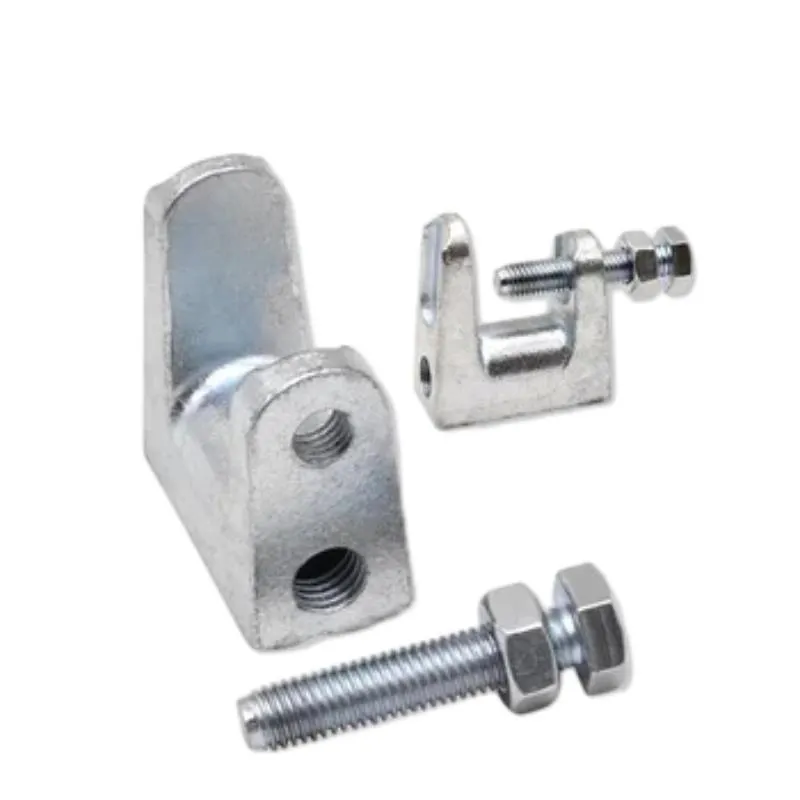oct. . 12, 2024 06:56 Back to list
Hexagonal Plain Nuts for Secure Connections in Mechanical Applications
Understanding Hexagonal Plain Nuts Essential Components in Fastening Technology
Hexagonal plain nuts are a commonly used fastener in various industries, playing a critical role in ensuring the integrity and security of assemblies. These nuts, typically made from metal, are designed to mate with bolts and screws to hold two or more components together. This article will explore the design, materials, applications, and advantages of hexagonal plain nuts, emphasizing their importance in modern engineering.
Design and Structure
Hexagonal nuts are characterized by their six-sided shape, which allows for easy gripping with wrenches and pliers. The internal threading of the nut corresponds to the external threads of a bolt or screw, creating a tight fit when assembled. This thread engagement is crucial for load distribution and can vary in pitch and diameter to accommodate different applications. The standard dimensions for hexagonal nuts are defined by various international standards, ensuring uniformity across the industry.
The design of hexagonal nuts is not only functional but also aesthetic. Their symmetrical shape provides a balance that is not only visually appealing but also efficient in terms of load-bearing capability. The hexagonal shape allows for optimum contact with the wrench, minimizing the risk of stripping the nut during tightening.
Materials Used
Hexagonal plain nuts are available in a variety of materials, each suited for different environments. Common materials include
1. Steel Often used in general applications, steel nuts can be treated with coatings such as zinc or phosphate to enhance their corrosion resistance. 2. Stainless Steel Ideal for environments subject to moisture and chemicals, stainless steel nuts provide excellent corrosion resistance while maintaining strength. 3. Brass Frequently used in electrical applications due to its non-magnetic properties and resistance to corrosion.
4. Plastic In certain applications, non-metallic hex nuts can be beneficial, particularly where the risk of corrosion or interference with electronic signals is a concern.
Applications
hexagonal plain nut

Hexagonal plain nuts are ubiquitous in construction, automotive, aerospace, and machinery manufacturing. Their reliability makes them an integral part of various assemblies, from securing metal frames to fastening engine components.
In construction, hexagonal nuts are essential for bolting together structural steel, ensuring that buildings can withstand both static and dynamic loads. In automotive applications, they secure critical components like engine mounts and suspension systems. The aerospace industry relies on these nuts to ensure the safety and durability of aircraft structures and systems.
Moreover, hexagonal nuts are essential in everyday consumer products, such as furniture, appliances, and electronics, demonstrating their versatile nature.
Advantages
One of the primary advantages of using hexagonal plain nuts is their simplicity and effectiveness in fastening. The ease of use translates to reduced assembly time and lower labor costs.
Furthermore, hexagonal nuts provide a robust locking mechanism due to their threading, which is resistant to loosening under vibration and dynamic loads. When paired with a washer, these nuts offer enhanced load distribution, further improving joint stability.
Additionally, the wide availability of hexagonal plain nuts in various sizes and materials allows engineers and designers the flexibility to choose the right component for their specific application, ensuring optimal performance and durability.
Conclusion
In summary, hexagonal plain nuts are essential components in the fastening world. Their simple yet effective design, versatility in applications, and efficiency make them a preferred choice among engineers and manufacturers. As technology advances and new materials are developed, the role of hexagonal plain nuts in assembly and construction will continue to evolve, but their fundamental purpose will remain the same to secure components and maintain the integrity of engineered structures. Understanding the characteristics and applications of hexagonal plain nuts is crucial for anyone involved in the manufacturing and construction industries, as they play an integral role in the success of countless projects worldwide.


